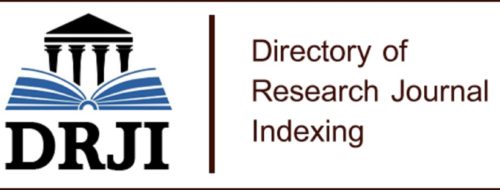Öz
Anahtar Kelimeler
Borsa Istanbul Portfolio Diversification ohansen Cointegration Granger Causality Test
Kaynakça
- AL-FAYOUMI, Nidal; Basheer KHAMEES and Ali AL-THUNEIBAT; (2009), “Information Transmission among Stock Return Indexes: Evidence from the Jordanian Stock Market”, International Research Journal of Finance and Economics. 24, pp. 194-208.
- ARBELAEZ, Harvey; Jorge URRUTIA and Nidal ABBAS; (2001), “Short-term and Long-term Linkages among the Colombian Capital Market Indexes”, International Review of Financial Analysis, 10, pp. 237-273.
- BERUMENT, Hakan, Yılmaz AKDI and Cemal ATAKAN; (2005), “An Empirical Analysis of Istanbul Stock Exchange Sub-Indexes”, Studies in Nonlinear Dynamics & Econometrics, 9(3), pp. 1-12.
- CHUANG, I.-Yuan; Ji-Ray LU and Keshin TSWEI; (2007), “Interdependence of International Equity Variances: Evidence from East Asian Markets”, Emerging Markets Review, 7, pp. 311-327.
- CONSTANTINOU, Eleni; Avo, KAZANDJIAN and George KOURETAS and Vera TAHMAZIAN; (2008), “Cointegration, Causality and Domestic Portfolio Diversification in the Cyprus Stock Exchange”, Journal of Money, Investment and Banking, 4, pp. 26-41.
- CORHAY, A.; Rad A. TOURANI and J-P URBAIN; (1993), “Common Stochastic Trends in European Stock Markets”, Economics Letters. 42(4), pp. 385-390.
- COTTER, John; (2004), “International Capital Market Integration in a Small Open Economy: Ireland January 1990-December 2000”, International Review of Financial Analysis, 13, pp. 669-85.
- DEO, Vishal; (2014), “Investigating Cointegration between Some Indian Stock Indices”, International Journal of Scientific & Engineering Research, 5(1), pp. 1869-1873.
- DICKEY, David A. and Wayne A. FULLER; (1979), “Distribution of the Estimators for Autoregressive Time Series with A Unit Root”, Journal of the American Statistical Association, 84, pp. 427-431.
- ELMAS, Bekir; (2013), “İstanbul Menkul Kıymetler Borsası’nda Hesaplanan Endeksler Arası İlişkiler”, Dicle Üniversitesi İktisadi ve İdari Bilimler Dergisi, 2(5), ss. 21-34.
- ENGLE, Robert F. and Clive W. J. GRANGER; (1987), “Cointegration and Error Correction: Representation, Estimation, and Testing”, Econometrica, 55, pp. 251-276.
- ENGLE, Robert F. and Byung Sam YOO; (1987), “Forecasting and Testing in Co-integrated Systems”, Journal of Econometrics. 35, pp. 143-159.
- JOHANSEN, Soren; (1988), “Statistical Analysis of Cointegration Vectors”, Journal of Economic Dynamics and Control, 12, pp. 251-254.
- KASA, Kenneth; (1992), “Common Stochastic Trends in International Stock Markets”, Journal of Monetary Economics, 29, pp. 95-124.
- KRISHNANKUTTY, Raveesh and Aviral Kumar TIWARI; (2011). “Are the Bombay Stock Exchange Sectoral Indices of Indian Stock Market Cointegrated? Evidence Using Fractional Cointegration Test”, Journal of Emerging Financial Markets, 2(1), pp. 37-45.
- MISHRA, Alok Kumar; (2002), “International Financial Integration of Domestic Financial Markets: A Study of India”, The ICFAI Journal of Applied Finance, 8 (2), pp. 5-15.
- NARAYAN, Paresh Kumar and Russell SMYTH; (2004), “Modeling the linkages between the Australian and G7 Stock Markets: Common Stochastic Trends and Regime Shifts”, Applied Financial Economics, 14, pp. 991-1004.
- PHILLIPS, C.B. Peter and Pierre PERRON; (1988), “Testing for a Unit Root in Time Series Regression”, Biomètrika, 75(2), pp. 336-346.
- SUBHA, M.V. and S.T Thirupparkadal NAMBI; (2010), “A Study on Cointegration between Indian and American Stock Markets”, Journal of Contemporary Research in Management, pp. 105-113.
- TIWARI, Aviral Kumar; ARIF, Billah DAR, Bhanja NIYATI and Aasif SHAH; (2013), “Stock Market Integration in Asian Countries: Evidence from Wavelet Multiple Correlations”, Journal of Economic Integration, 28(3), pp. 441-456.
- WALID, M.A. Ahmed; (2012), “On the Interdependence Structure of Market Sector Indices: The Case of Qatar Exchange”, Review of Accounting and Finance, 11(4), pp. 468-488.
- WANG, Zijun; Ali KUTAN and Jian YANG; (2005), Information Flows within and Across Sectors in Chinese Stock Markets, The Quarterly Review of Economics and Finance, 45, pp. 767-780.
- YÜKSEL, Ebru ve Güldal GÜLERYÜZ; (2010), “How Are the Sector Indexes are Related to ISE 100 Index: An Empirical Study on Istanbul Stock Exchange, International Conference”, 24th Mini EURO Conference “Continuous Optimization and Information-Based Technologies in the Financial Sector” June 23-26.
Öz
Anahtar Kelimeler
Borsa İstanbul Portföy Çeşitlendirmesi Johansen Eşbütünleşme Testi Granger Nedensellik Testi
Kaynakça
- AL-FAYOUMI, Nidal; Basheer KHAMEES and Ali AL-THUNEIBAT; (2009), “Information Transmission among Stock Return Indexes: Evidence from the Jordanian Stock Market”, International Research Journal of Finance and Economics. 24, pp. 194-208.
- ARBELAEZ, Harvey; Jorge URRUTIA and Nidal ABBAS; (2001), “Short-term and Long-term Linkages among the Colombian Capital Market Indexes”, International Review of Financial Analysis, 10, pp. 237-273.
- BERUMENT, Hakan, Yılmaz AKDI and Cemal ATAKAN; (2005), “An Empirical Analysis of Istanbul Stock Exchange Sub-Indexes”, Studies in Nonlinear Dynamics & Econometrics, 9(3), pp. 1-12.
- CHUANG, I.-Yuan; Ji-Ray LU and Keshin TSWEI; (2007), “Interdependence of International Equity Variances: Evidence from East Asian Markets”, Emerging Markets Review, 7, pp. 311-327.
- CONSTANTINOU, Eleni; Avo, KAZANDJIAN and George KOURETAS and Vera TAHMAZIAN; (2008), “Cointegration, Causality and Domestic Portfolio Diversification in the Cyprus Stock Exchange”, Journal of Money, Investment and Banking, 4, pp. 26-41.
- CORHAY, A.; Rad A. TOURANI and J-P URBAIN; (1993), “Common Stochastic Trends in European Stock Markets”, Economics Letters. 42(4), pp. 385-390.
- COTTER, John; (2004), “International Capital Market Integration in a Small Open Economy: Ireland January 1990-December 2000”, International Review of Financial Analysis, 13, pp. 669-85.
- DEO, Vishal; (2014), “Investigating Cointegration between Some Indian Stock Indices”, International Journal of Scientific & Engineering Research, 5(1), pp. 1869-1873.
- DICKEY, David A. and Wayne A. FULLER; (1979), “Distribution of the Estimators for Autoregressive Time Series with A Unit Root”, Journal of the American Statistical Association, 84, pp. 427-431.
- ELMAS, Bekir; (2013), “İstanbul Menkul Kıymetler Borsası’nda Hesaplanan Endeksler Arası İlişkiler”, Dicle Üniversitesi İktisadi ve İdari Bilimler Dergisi, 2(5), ss. 21-34.
- ENGLE, Robert F. and Clive W. J. GRANGER; (1987), “Cointegration and Error Correction: Representation, Estimation, and Testing”, Econometrica, 55, pp. 251-276.
- ENGLE, Robert F. and Byung Sam YOO; (1987), “Forecasting and Testing in Co-integrated Systems”, Journal of Econometrics. 35, pp. 143-159.
- JOHANSEN, Soren; (1988), “Statistical Analysis of Cointegration Vectors”, Journal of Economic Dynamics and Control, 12, pp. 251-254.
- KASA, Kenneth; (1992), “Common Stochastic Trends in International Stock Markets”, Journal of Monetary Economics, 29, pp. 95-124.
- KRISHNANKUTTY, Raveesh and Aviral Kumar TIWARI; (2011). “Are the Bombay Stock Exchange Sectoral Indices of Indian Stock Market Cointegrated? Evidence Using Fractional Cointegration Test”, Journal of Emerging Financial Markets, 2(1), pp. 37-45.
- MISHRA, Alok Kumar; (2002), “International Financial Integration of Domestic Financial Markets: A Study of India”, The ICFAI Journal of Applied Finance, 8 (2), pp. 5-15.
- NARAYAN, Paresh Kumar and Russell SMYTH; (2004), “Modeling the linkages between the Australian and G7 Stock Markets: Common Stochastic Trends and Regime Shifts”, Applied Financial Economics, 14, pp. 991-1004.
- PHILLIPS, C.B. Peter and Pierre PERRON; (1988), “Testing for a Unit Root in Time Series Regression”, Biomètrika, 75(2), pp. 336-346.
- SUBHA, M.V. and S.T Thirupparkadal NAMBI; (2010), “A Study on Cointegration between Indian and American Stock Markets”, Journal of Contemporary Research in Management, pp. 105-113.
- TIWARI, Aviral Kumar; ARIF, Billah DAR, Bhanja NIYATI and Aasif SHAH; (2013), “Stock Market Integration in Asian Countries: Evidence from Wavelet Multiple Correlations”, Journal of Economic Integration, 28(3), pp. 441-456.
- WALID, M.A. Ahmed; (2012), “On the Interdependence Structure of Market Sector Indices: The Case of Qatar Exchange”, Review of Accounting and Finance, 11(4), pp. 468-488.
- WANG, Zijun; Ali KUTAN and Jian YANG; (2005), Information Flows within and Across Sectors in Chinese Stock Markets, The Quarterly Review of Economics and Finance, 45, pp. 767-780.
- YÜKSEL, Ebru ve Güldal GÜLERYÜZ; (2010), “How Are the Sector Indexes are Related to ISE 100 Index: An Empirical Study on Istanbul Stock Exchange, International Conference”, 24th Mini EURO Conference “Continuous Optimization and Information-Based Technologies in the Financial Sector” June 23-26.
Ayrıntılar
| Bölüm | Makaleler |
|---|---|
| Yazarlar | |
| Yayımlanma Tarihi | 30 Haziran 2019 |
| Kabul Tarihi | 14 Şubat 2019 |
| Yayımlandığı Sayı | Yıl 2019 |
Cited By
Borsa Istanbul Sectoral Connectedness Analysis
Yönetim ve Ekonomi Dergisi
https://doi.org/10.18657/yonveek.1284521
AN ASSESSMENT OF COINTEGRATION AND CAUSALITY RELATIONSHIPS BETWEEN BIST 50 AND KATILIM 30 INDICES
Finans Ekonomi ve Sosyal Araştırmalar Dergisi
https://doi.org/10.29106/fesa.1129607
Dynamic Connectedness between Sector Indices: Evidence from Borsa Istanbul
Eskişehir Osmangazi Üniversitesi İktisadi ve İdari Bilimler Dergisi
Ramazan EKİNCİ
https://doi.org/10.17153/oguiibf.879784













ERÜ İktisadi ve İdari Bilimler Fakültesi Dergisi 2021 | iibfdergi@erciyes.edu.tr
Bu eser Creative Commons Atıf-Gayri Ticari-Türetilemez 4.0 Uluslararası Lisansı ile lisanslanmıştır.


